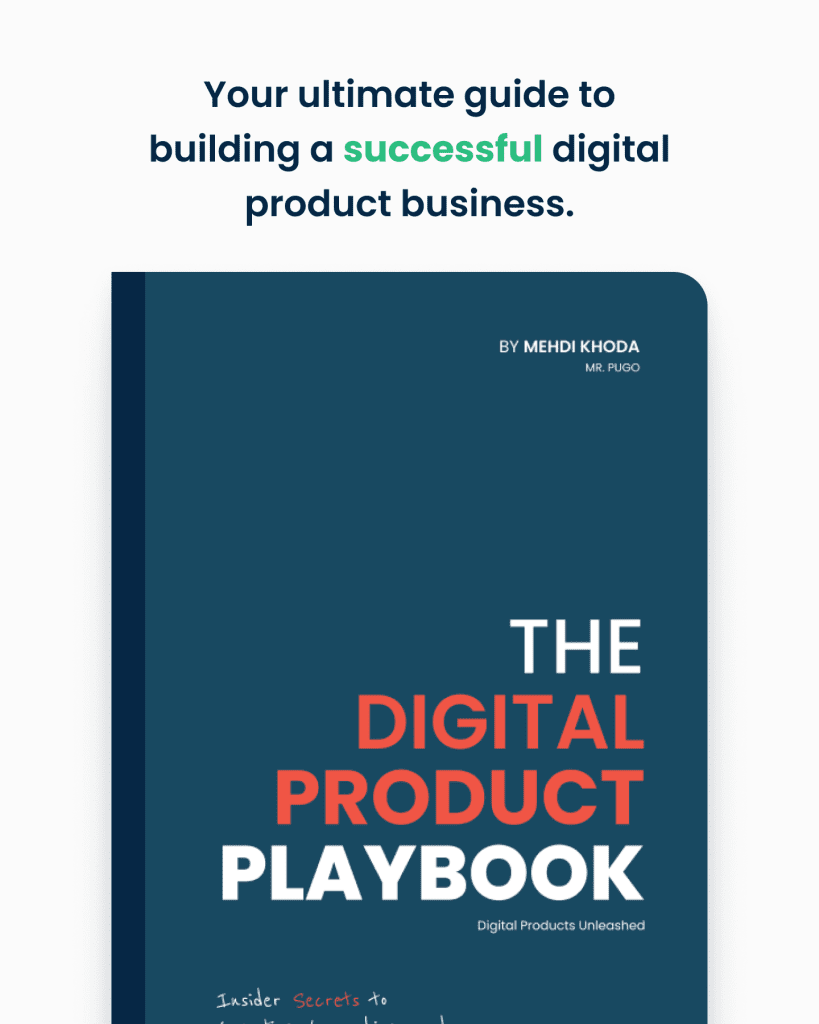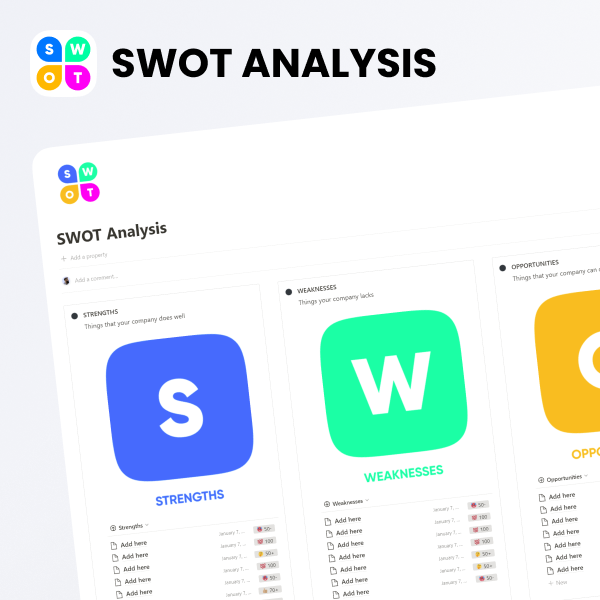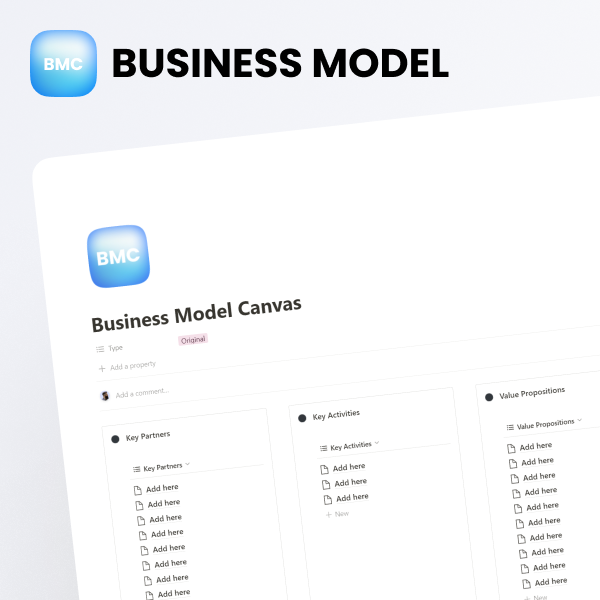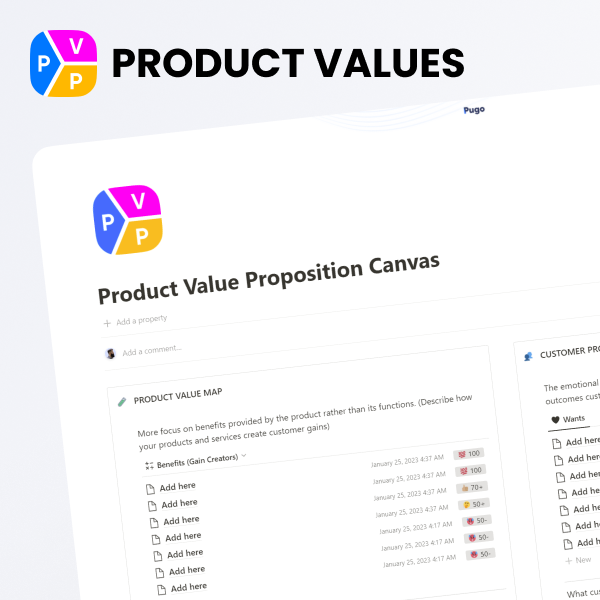Mastering Marketing Strategies for Solo Entrepreneurs

Marketing Strategies for Solo Entrepreneurs.
Being a solo entrepreneur is an exhilarating journey filled with opportunities and challenges. While you may be the sole driver of your business, mastering marketing strategies is crucial for long-term success. In this blog post, we will explore various marketing strategies that solo entrepreneurs can leverage to create a strong brand presence, attract customers, and drive growth. From crafting a compelling brand identity to implementing effective digital marketing tactics, this guide will equip you with the knowledge and tools needed to excel in your solo entrepreneurship journey.
I. Building a Strong Brand Foundation

Defining Your Brand Identity
Your brand identity is the core essence of your business, encapsulating what sets you apart from the competition. By understanding your unique selling proposition (USP), identifying your target audience, and crafting your brand values and personality, you can establish a strong foundation for your brand.
Before we dive deeper, make sure to check out these informative posts as well:
- Unleashing Your Solopreneur Superpowers
- The Art of Outsourcing: Leveraging Freelancers and Virtual Assistants for Solopreneurs
- The Solo Side Hustle Symphony: Harmonizing Multiple Ventures as a Solopreneur
a. Understanding Your Unique Selling Proposition (USP)
Your USP is the distinct feature or benefit that sets your product or service apart from others in the market. It answers the question, “Why should customers choose you?” To define your USP, consider what makes your offering unique, whether it’s a specific feature, quality, or customer experience. Conduct market research to identify gaps or unmet needs that your USP can address. Once you have determined your USP, incorporate it into your branding and marketing efforts to differentiate yourself from competitors.
b. Identifying Your Target Audience
Understanding your target audience is vital for effective branding and marketing. Identify the specific demographic, psychographic, and behavioral characteristics of your ideal customer. Consider factors such as age, gender, location, interests, and pain points. Conduct market research, analyze customer data, and create buyer personas to gain a deeper understanding of your target audience. This knowledge will help you tailor your branding messages and create relevant and impactful marketing campaigns.
c. Crafting Your Brand Values and Personality
Your brand values and personality are the guiding principles and character traits that define your brand. Determine the core values that align with your business objectives and resonate with your target audience. These values will shape your brand’s voice, tone, and behavior. Consider whether your brand is playful, professional, authoritative, or innovative. Create a brand personality that aligns with your target audience’s preferences and resonates with their emotions. This will help you create authentic connections and build brand loyalty.
Creating a Memorable Brand Name and Logo
Your brand name and logo play a crucial role in establishing brand recognition and recall. They should be carefully crafted to reflect your brand identity and resonate with your target audience.
a. Choosing a Name that Reflects Your Brand Identity
Selecting a name for your brand requires thoughtful consideration. It should be memorable, easy to pronounce, and aligned with your brand identity. Brainstorm a list of potential names and evaluate them based on relevance, uniqueness, and the availability of domain names and trademarks. Consider conducting market research or soliciting feedback from your target audience to ensure the chosen name resonates with them. Once you have chosen a name, register it and secure the corresponding domain name.
b. Designing a Professional and Eye-Catching Logo
Your logo is a visual representation of your brand and should be designed to leave a lasting impression. It should align with your brand identity, evoke the desired emotions, and be visually appealing. Hire a professional graphic designer or use design software to create a logo that reflects your brand’s values, personality, and unique selling proposition. Consider elements such as colors, typography, and symbols that convey the desired message. Test your logo across various platforms and sizes to ensure it remains legible and impactful.
c. Ensuring Consistency Across Brand Assets
Consistency is key in building a strong brand. Ensure that your brand name, logo, colors, typography, and overall visual style remain consistent across all brand assets. This includes your website, social media profiles, marketing materials, packaging, and any other touchpoints with your target audience. Consistency builds recognition, trust, and a cohesive brand experience. Develop brand guidelines that outline the proper usage of your brand assets, and communicate them to all stakeholders, including employees and external partners.
Developing Your Brand Story
A compelling brand story captures the essence of your brand, connects emotionally with your audience, and sets the foundation for authentic engagement.
a. Crafting a Compelling Narrative
Your brand story should articulate the journey, purpose, and values that led to the creation of your business. It should resonate with your target audience and evoke emotions. Craft a narrative that highlights the challenges, successes, and inspiration behind your brand. Use storytelling techniques to engage your audience and make them feel a part of your brand’s story.
b. Communicating Your Values and Mission
Clearly communicate your brand’s values and mission in your brand story. Explain how these values and mission drive your business decisions and customer interactions. Use language that aligns with your brand’s personality and resonates with your target audience. Show how your values and mission differentiate you from competitors and provide added value to customers.
c. Engaging Your Audience through Storytelling
Storytelling is a powerful tool for engaging your audience. Use various channels such as your website, blog, social media, and email marketing to share your brand story in a compelling and relatable way. Incorporate customer testimonials, case studies, and user-generated content to demonstrate how your brand has made a positive impact. Encourage your audience to share their stories and experiences with your brand, fostering a sense of community and loyalty.
Conclusion
Building a strong brand foundation is essential for solo entrepreneurs. By defining your brand identity, including your unique selling proposition, target audience, and brand values, you can establish a clear direction for your brand. Creating a memorable brand name and logo that reflect your brand identity and ensuring consistency across brand assets will enhance brand recognition. Developing a compelling brand story and communicating your values and mission will engage your audience on an emotional level. With a solid brand foundation, you can effectively differentiate yourself in the market, build strong customer relationships, and drive long-term success as a solo entrepreneur.
II. Crafting an Effective Marketing Plan

A well-crafted marketing plan is crucial for solo entrepreneurs to guide their marketing efforts and achieve their business objectives. By setting clear marketing goals, conducting market research, and defining a unique value proposition (UVP), you can develop a comprehensive plan that drives success.
Setting Clear Marketing Goals
a. Defining SMART Objectives
When setting marketing goals, it’s important to follow the SMART framework – Specific, Measurable, Achievable, Relevant, and Time-bound. Be specific about what you want to achieve, such as increasing website traffic or improving conversion rates. Ensure your goals are measurable, allowing you to track progress and assess success. Set achievable goals that align with your resources and capabilities. Ensure that your goals are relevant to your overall business objectives. Lastly, establish a timeline with specific deadlines to create a sense of urgency and accountability.
b. Identifying Key Performance Indicators (KPIs)
To measure the effectiveness of your marketing efforts, it’s essential to identify key performance indicators (KPIs) that align with your goals. KPIs could include metrics such as website traffic, conversion rates, customer acquisition cost, customer lifetime value, social media engagement, or email open rates. Choose KPIs that directly reflect the impact of your marketing activities on your business objectives. Regularly track and analyze these metrics to gauge your progress and make data-driven decisions.
c. Creating a Timeline and Actionable Strategies
Developing a timeline is crucial to ensure that your marketing activities are well-organized and executed efficiently. Break down your goals into actionable strategies and allocate specific timeframes for each task or campaign. Consider the resources and budget required for each strategy and ensure they align with your overall business plan. Set milestones and regularly review and adjust your timeline to stay on track and adapt to changing circumstances.
Conducting Market Research
a. Analyzing Your Target Market
Thoroughly understanding your target market is essential for effective marketing. Conduct market research to gain insights into your customers’ demographics, preferences, behaviors, and needs. Use surveys, interviews, and analytics tools to collect data and analyze it to identify patterns and trends. Understand your customers’ pain points and motivations, and tailor your marketing messages to address them effectively. By understanding your target market, you can develop marketing strategies that resonate with their needs and preferences.
b. Identifying Competitors and Their Strategies
Analyzing your competitors’ strategies can provide valuable insights and help you differentiate yourself in the market. Identify your direct and indirect competitors and analyze their marketing tactics, target audience, pricing strategies, messaging, and branding. Identify gaps or areas where you can offer unique value to your customers. Learn from your competitors’ successes and failures and find ways to position yourself as a stronger alternative.
c. Identifying Market Trends and Customer Needs
Stay updated with the latest market trends and changes in customer needs to ensure your marketing strategies remain relevant and effective. Monitor industry publications, online forums, social media discussions, and customer feedback to identify emerging trends and shifts in consumer behavior. Anticipate and adapt to these trends to stay ahead of the competition and fulfill customer needs proactively. Incorporate these insights into your marketing plan to tailor your messaging and offerings accordingly.
Defining Your Unique Value Proposition (UVP)
Marketing Strategies for Solo Entrepreneurs.
a. Assessing Your Competitive Advantage
To craft a strong UVP, assess your competitive advantage. Identify what sets you apart from your competitors, whether it’s your unique product features, exceptional customer service, faster delivery times, or expertise in a specific niche. Determine the value you bring to your customers that competitors cannot easily replicate. Highlight these strengths in your UVP to attract and retain customers.
b. Differentiating Yourself from Competitors
Understanding your competitors’ offerings allows you to identify areas where you can differentiate yourself. Analyze their UVPs, messaging, and customer feedback to find gaps or underserved segments in the market. Develop strategies and offerings that set you apart, such as personalized experiences, innovative solutions, or superior quality. Focus on communicating how you solve your customers’ problems better than anyone else.
c. Communicating Your UVP Effectively
Once you have defined your UVP, it’s crucial to effectively communicate it to your target audience. Craft clear and concise messaging that highlights the unique benefits and value you offer. Incorporate your UVP into your branding, website, marketing materials, and customer interactions. Use compelling storytelling techniques to engage your audience and make an emotional connection. Consistently reinforce your UVP across all touchpoints to build brand recognition and loyalty.
Conclusion
Crafting an effective marketing plan involves setting clear goals, conducting thorough market research, and defining a unique value proposition. By following the SMART framework, identifying KPIs, and creating a timeline, you can stay focused and track your progress effectively. Conducting market research allows you to understand your target market, identify competitors, and stay updated with market trends. Finally, defining your unique value proposition enables you to differentiate yourself and communicate your unique offering to your target audience. By integrating these elements into your marketing plan, you can optimize your marketing efforts, attract customers, and drive business growth as a solo entrepreneur.
III. Harnessing the Power of Digital Marketing

In today’s digital age, harnessing the power of digital marketing is essential for solo entrepreneurs to reach a wider audience and drive business growth. By creating a professional website, implementing content marketing and blogging strategies, utilizing social media marketing, leveraging email marketing, and optimizing for search engines, you can maximize your online presence and attract valuable customers.
Creating a Professional Website
a. Choosing the Right Domain Name and Hosting
Selecting the right domain name is crucial as it represents your brand and online identity. Choose a domain name that is memorable, easy to spell, and closely related to your business. Ensure that it aligns with your brand and industry. Additionally, select a reliable hosting provider that offers fast loading times, secure servers, and good customer support.
b. Designing a User-Friendly and Mobile-Responsive Website
Design a website that is visually appealing, easy to navigate, and optimized for a seamless user experience. Consider using a responsive design that adapts to different screen sizes, making it mobile-friendly. Use intuitive navigation menus, clear call-to-action buttons, and relevant visuals to engage visitors and guide them through your site.
c. Optimizing Your Website for Search Engines (SEO)
Implement search engine optimization (SEO) techniques to improve your website’s visibility in search engine results. Conduct keyword research to identify relevant keywords and incorporate them naturally into your website’s content, titles, meta tags, and URLs. Optimize your website’s loading speed, ensure proper site structure, and optimize your images and videos. Regularly publish fresh and valuable content to attract search engine crawlers and improve your search rankings.
Content Marketing and Blogging
a. Developing a Content Strategy
Develop a content strategy that aligns with your business goals and target audience. Identify the topics and themes that resonate with your audience and are relevant to your industry. Determine the types of content you will create, such as blog posts, articles, videos, infographics, or podcasts. Plan your content calendar and establish a consistent publishing schedule.
b. Creating High-Quality and Relevant Content
Create content that provides value, educates, entertains, or solves problems for your target audience. Ensure that your content is well-researched, accurate, and engaging. Use a mix of formats to cater to different preferences. Incorporate visuals, such as images and videos, to enhance the readability and shareability of your content.
c. Promoting Your Blog through Social Media and Email Marketing
Promote your blog and content through social media platforms that align with your target audience. Share your blog posts, snippets, and visual content on platforms such as Facebook, Twitter, LinkedIn, or Instagram. Engage with your audience by responding to comments, asking questions, and encouraging sharing. Additionally, leverage email marketing by sending regular newsletters or updates to your subscribers, featuring your latest blog posts and valuable content.
Social Media Marketing
a. Selecting the Right Social Media Platforms for Your Business
Identify the social media platforms that are most relevant to your target audience and align with your business objectives. Choose platforms where your audience is active and engaged. Popular platforms include Facebook, Instagram, Twitter, LinkedIn, Pinterest, and YouTube. Each platform offers unique features and demographics, so tailor your content and strategies accordingly. Marketing Strategies for Solo Entrepreneurs.
b. Creating Engaging and Shareable Content
Create social media content that is visually appealing, informative, and engaging. Use compelling visuals, including images, videos, and infographics, to capture attention. Craft concise and compelling captions that encourage interactions and sharing. Encourage user-generated content by running contests or asking for feedback. Actively engage with your audience by responding to comments, messages, and mentions.
c. Leveraging Social Media Advertising and Influencer Marketing
Utilize social media advertising to reach a wider audience and promote your products or services. Platforms like Facebook Ads, Instagram Ads, and LinkedIn Ads offer robust targeting options to ensure your ads reach the right audience. Consider partnering with influencers or industry experts who have a significant following and influence over your target audience. Collaborate with them to create sponsored content or host giveaways to expand your reach.
Email Marketing
a. Building an Email List and Capturing Leads
Build an email list by implementing lead capture strategies on your website, such as offering valuable content downloads, exclusive discounts, or newsletter subscriptions. Use opt-in forms, pop-ups, or landing pages to capture leads’ email addresses. Ensure compliance with data protection regulations and clearly communicate how you will use their information.
b. Creating Personalized and Compelling Email Campaigns
Craft personalized and compelling email campaigns that cater to different segments of your audience. Use email marketing automation tools to send targeted emails based on subscriber preferences, behavior, or purchase history. Segment your audience to deliver relevant content and offers. Use catchy subject lines, engaging visuals, and clear calls-to-action to encourage opens, clicks, and conversions.
c. Nurturing Customer Relationships through Email Automation
Use email automation to nurture customer relationships and drive customer loyalty. Set up automated email sequences to welcome new subscribers, send follow-ups after purchases, request feedback, or re-engage inactive customers. Personalize your emails with the recipient’s name and relevant content. Continuously analyze email metrics, such as open rates and click-through rates, to optimize your email campaigns.
Search Engine Optimization (SEO)
a. Conducting Keyword Research
Keyword research is crucial for SEO success. Identify keywords and phrases that your target audience uses to search for products or services similar to yours. Use keyword research tools to find relevant and high-volume keywords with manageable competition. Incorporate these keywords naturally into your website’s content, headings, and meta tags.
b. Optimizing Your Website for Search Engines
Optimize your website’s technical aspects for search engines. Ensure your website has a clear site structure, with easily accessible navigation and a sitemap. Optimize your meta tags, including title tags and meta descriptions, with relevant keywords. Use header tags (H1, H2, H3, etc.) to structure your content and make it more readable for search engines.
c. Building Quality Backlinks to Improve Search Rankings
Earn quality backlinks from authoritative and relevant websites to boost your search rankings. Publish valuable content that others would want to link to naturally. Reach out to industry influencers, bloggers, or publications to request backlinks or collaborations. Participate in guest blogging opportunities or contribute to industry forums and discussions to establish yourself as an expert and earn backlinks.
Conclusion
Harnessing the power of digital marketing is crucial for solo entrepreneurs to establish a strong online presence and attract valuable customers. By creating a professional website, implementing content marketing and blogging strategies, utilizing social media marketing, leveraging email marketing, and optimizing for search engines, you can effectively reach and engage your target audience. Continuously analyze and adapt your digital marketing strategies to stay ahead in the dynamic digital landscape and drive business growth as a solo entrepreneur.
IV. Embracing Relationship Marketing

In today’s competitive business landscape, building strong customer relationships is crucial for solo entrepreneurs to foster loyalty, drive repeat business, and attract new customers through word-of-mouth referrals. By providing exceptional customer service, personalizing interactions and communication, implementing customer feedback and loyalty programs, networking and collaborating with others in your industry, and leveraging the power of referrals, you can embrace relationship marketing and create lasting connections with your audience.
Building Strong Customer Relationships
a. Providing Exceptional Customer Service
Marketing Strategies for Solo Entrepreneurs
Exceptional customer service is the cornerstone of building strong relationships with your customers. Ensure that your interactions with customers are friendly, prompt, and helpful. Train your customer service team to address customer inquiries and resolve issues efficiently. Listen actively to customer feedback and go the extra mile to exceed their expectations. By providing exceptional customer service, you demonstrate your commitment to their satisfaction and build trust.
b. Personalizing Your Interactions and Communication
Personalization is key to creating meaningful connections with your customers. Use customer relationship management (CRM) tools to gather and track customer data, including their preferences, purchase history, and communication preferences. Tailor your interactions and communication to their individual needs and interests. Address customers by their names, send personalized emails, and offer relevant product recommendations. Personalization shows that you value and understand your customers, fostering a sense of loyalty.
c. Implementing Customer Feedback and Loyalty Programs
Customer feedback is a valuable resource for improving your products, services, and customer experience. Encourage customers to provide feedback through surveys, online reviews, or feedback forms. Actively listen to their suggestions and concerns and make improvements based on their input. Implement a loyalty program to reward and incentivize repeat business. Offer exclusive discounts, early access to new products, or special perks to loyal customers, fostering a sense of appreciation and strengthening their relationship with your brand.
Networking and Collaboration
a. Attending Industry Events and Conferences
Networking at industry events and conferences provides opportunities to meet like-minded professionals, potential customers, and industry leaders. Attend relevant conferences, trade shows, seminars, and workshops in your industry. Engage in conversations, exchange business cards, and follow up with meaningful connections. Participate in panel discussions or speaking engagements to establish yourself as an expert and expand your network.
b. Joining Professional Associations and Online Communities
Joining professional associations and online communities allows you to connect with professionals in your field and share insights and experiences. Participate in industry-specific forums, social media groups, and online communities. Contribute valuable content, answer questions, and engage in discussions. By actively participating, you can build your reputation, gain visibility, and establish connections with potential collaborators or partners.
c. Collaborating with Complementary Businesses
Collaborating with complementary businesses can expand your reach and offer mutual benefits. Identify businesses that share your target audience but offer different products or services. Explore collaborative opportunities such as joint marketing campaigns, cross-promotions, co-branded events, or bundled offerings. By partnering with complementary businesses, you can tap into new customer segments, enhance your offerings, and leverage each other’s networks and resources.
Leveraging the Power of Referrals
a. Encouraging Satisfied Customers to Refer Others
Satisfied customers can be powerful advocates for your business. Encourage them to refer their friends, family, or colleagues by offering incentives or referral programs. Request referrals through personalized emails or follow-ups after a positive experience. Provide easy-to-use referral tools or shareable links to facilitate the referral process. When customers refer others, it signifies their trust in your business and can result in high-quality leads.
Unlocking Success: “The Digital Product Playbook” – Your Guide to Creating and Selling Digital Products
Ah, dear solopreneurs, we have a special treat for you! While we navigate the treacherous waters of self-promotion, it would be remiss not to mention an invaluable resource that could transform your one-person business into a digital product empire. Introducing “The Digital Product Playbook” by Mr. Pugo. This gem of a book contains secrets, strategies, and a pinch of wit to help you navigate the world of digital product creation and sales. So, if you’re ready to take your business to the next level and turn your expertise into lucrative digital products, grab a copy of “The Digital Product Playbook” today! Warning: Side effects may include uncontrollable laughter and unprecedented success.

b. Offering Incentives for Referrals
Incentivize referrals by offering rewards or incentives to customers who refer new customers to your business. Provide discounts, exclusive offers, or loyalty points for successful referrals. Make the referral process transparent and straightforward, ensuring that both the referrer and the new customer receive their rewards promptly. By rewarding referrals, you motivate your customers to actively promote your business to their networks.
c. Building Strategic Partnerships for Mutual Referrals
Establish strategic partnerships with businesses that complement yours and have a similar target audience. Create a mutually beneficial agreement where you refer customers to each other. Develop a referral program that outlines the terms and benefits of the partnership. Collaborate on joint marketing initiatives or share advertising resources to maximize the impact. Strategic partnerships can expand your reach and provide valuable referral opportunities.
Conclusion
Embracing relationship marketing is essential for solo entrepreneurs to build strong customer connections, nurture loyalty, and drive business growth. By providing exceptional customer service, personalizing interactions, implementing customer feedback and loyalty programs, networking and collaborating with others in your industry, and leveraging the power of referrals, you can foster meaningful relationships with your customers and establish a solid foundation for long-term success. Remember, nurturing relationships is an ongoing process, so consistently invest time and effort to deepen connections and delight your customers.
V. Tracking, Analyzing, and Optimizing Results
To ensure the effectiveness of your marketing efforts as a solo entrepreneur, it is crucial to track, analyze, and optimize your results. By monitoring key metrics, conducting A/B testing and experimentation, and staying ahead of industry trends, you can make data-driven decisions, maximize your marketing ROI, and stay competitive in your industry.
Monitoring Key Metrics
a. Tracking Website Analytics and Conversion Rates
Utilize web analytics tools such as Google Analytics to track important metrics like website traffic, user behavior, and conversion rates. Monitor metrics such as page views, bounce rates, average time on site, and conversion funnels. Analyzing these data points can provide insights into how well your website is performing, which pages are most engaging, and areas for improvement.
b. Analyzing Social Media Engagement and Reach
Social media platforms offer their own analytics tools to help you track engagement and reach. Monitor metrics such as likes, shares, comments, and click-through rates. Analyze the demographics and behavior of your social media followers to better understand your target audience. Use this data to optimize your content strategy and identify opportunities for increased engagement.
c. Measuring Email Open Rates and Click-Through Rates
Email marketing platforms provide metrics on email open rates and click-through rates (CTRs). Monitor these metrics to gauge the effectiveness of your email campaigns. A high open rate indicates that your subject lines are engaging, while a high CTR indicates that your content is compelling and driving action. Continuously refine your email marketing strategy based on these metrics and audience feedback.
A/B Testing and Experimentation
a. Testing Different Marketing Channels and Strategies
Conduct A/B tests to compare the performance of different marketing channels and strategies. For example, you can test different ad formats, messaging, or targeting options on platforms like Google Ads or social media advertising. Measure key performance indicators (KPIs) such as click-through rates, conversion rates, and return on ad spend (ROAS) to identify the most effective channels for your business.
b. Optimizing Landing Pages and Calls-to-Action
Optimize your landing pages and calls-to-action (CTAs) through A/B testing. Test different layouts, headlines, colors, and CTAs to determine which combinations drive the highest conversion rates. Monitor metrics such as bounce rates, time on page, and form submissions to evaluate the effectiveness of your optimizations. Continuously iterate and refine your landing pages to improve conversion rates.
c. Iterating and Refining Your Marketing Tactics
Regularly review your marketing tactics and strategies based on data-driven insights. Analyze the performance of your campaigns, channels, and messaging. Identify areas that require improvement or adjustment. Make data-backed decisions to optimize your marketing efforts and allocate resources effectively. By continuously iterating and
advances and changes in consumer behavior to stay ahead of the curve. Keep an eye on emerging technologies, such as artificial intelligence (AI), virtual reality (VR), or voice search, and assess how they can be integrated into your marketing efforts. Stay informed about shifts in consumer preferences, habits, and expectations. For example, the rise of mobile usage or the increasing demand for personalized experiences. Adapt your marketing strategies accordingly to meet the evolving needs of your target audience.
Incorporate data from market research, consumer surveys, and customer feedback to gain insights into emerging trends and changes in consumer behavior. Leverage social listening tools to monitor conversations and sentiment surrounding your brand and industry. By understanding your audience’s preferences and behaviors, you can proactively adapt your marketing tactics to align with their expectations.
Experiment with new platforms and channels that align with the latest trends. For example, if your target audience is actively engaging on a specific social media platform or consuming content through a new medium like podcasts or video streaming, explore ways to incorporate these channels into your marketing mix. Be open to testing new strategies and technologies, and be willing to iterate and adapt based on the results.
Conclusion
Tracking, analyzing, and optimizing your marketing results as a solo entrepreneur is essential for driving success in your business. By monitoring key metrics, conducting A/B testing and experimentation, and staying ahead of industry trends, you can make data-driven decisions, refine your marketing strategies, and effectively reach and engage your target audience. Remember that the digital landscape is dynamic, so continuously learning, adapting, and refining your approach will position you for long-term success in the ever-evolving world of marketing.
The Path to Solo Entrepreneur Marketing Mastery
Crafting an effective marketing plan is crucial for solo entrepreneurs to achieve their business goals and stand out in a competitive marketplace. By setting clear marketing goals, conducting market research, defining your unique value proposition, and communicating it effectively, you can create a roadmap for success.
Setting Clear Marketing Goals
To start, define SMART (Specific, Measurable, Achievable, Relevant, Time-bound) objectives for your marketing efforts. These goals should be specific, quantifiable, realistic, aligned with your overall business objectives, and have a clear timeline. This will provide clarity and direction, helping you stay focused and track your progress.
Identifying Key Performance Indicators (KPIs)
Identify the key performance indicators (KPIs) that align with your marketing goals. These metrics will help you measure the success of your marketing efforts. Examples of KPIs include website traffic, conversion rates, social media engagement, email open rates, and sales revenue. Regularly monitor and analyze these metrics to gain insights into the effectiveness of your marketing strategies.
Creating a Timeline and Actionable Strategies
Develop a timeline that outlines the specific tasks and milestones for implementing your marketing strategies. Break down your marketing plan into actionable steps and assign responsibilities to ensure accountability. This will help you stay organized, prioritize tasks, and track progress towards your goals.
Conducting Market Research
Thorough market research is essential for understanding your target market, identifying competitors, and staying informed about market trends and customer needs.
Analyzing Your Target Market
Identify the characteristics of your ideal customers, such as demographics, psychographics, and buying behaviors. Conduct surveys, interviews, or focus groups to gather insights directly from your target audience. This will help you tailor your marketing messages and strategies to effectively reach and engage them.
Identifying Competitors and Their Strategies
Research your competitors to understand their strengths, weaknesses, and marketing strategies. Analyze their messaging, branding, pricing, distribution channels, and customer engagement tactics. This will allow you to differentiate yourself and identify opportunities to gain a competitive advantage.
Identifying Market Trends and Customer Needs
Stay up-to-date with market trends, industry developments, and changes in consumer behavior. Monitor social media discussions, industry publications, and market research reports to identify emerging trends and shifting customer needs. This will enable you to adapt your marketing strategies to meet evolving customer expectations and stay ahead of the competition.
Defining Your Unique Value Proposition (UVP)
Your unique value proposition (UVP) sets you apart from competitors and communicates the unique benefits your products or services offer to customers.
Assessing Your Competitive Advantage
Identify your competitive advantage by understanding what makes your business unique. Evaluate your strengths, such as expertise, quality, innovation, or customer service. Highlight these strengths in your marketing efforts to differentiate yourself and attract customers.
Differentiating Yourself from Competitors
Identify the gaps in the market that you can fill and articulate how your offerings are different or superior to those of your competitors. Communicate your unique features, benefits, and value to your target audience. This will help customers see why they should choose your products or services over alternatives.
Communicating Your UVP Effectively
Craft compelling messaging that effectively communicates your UVP. Develop clear and concise taglines, elevator pitches, and marketing messages that resonate with your target audience. Consistently integrate your UVP into your branding, website content, social media posts, and advertising campaigns.
By mastering these marketing strategies as a solo entrepreneur, you can position your business for success. Building a strong brand foundation, crafting an effective marketing plan, harnessing the power of digital marketing, embracing relationship marketing, and tracking, analyzing, and optimizing your results will help you attract and retain customers, drive business growth, and achieve your entrepreneurial goals. Remember, marketing is an ongoing process, so continuously refine and adapt your strategies based on customer feedback, market trends, and emerging technologies to stay ahead in the ever-evolving business landscape.
FREE Business Tools:
Unlock Your Business Potential with Essential Tools: SWOT Analysis, Product Value Proposition Canvas, and Business Model Canvas
Are you ready to take your business to new heights? Don’t miss out on the incredible power of these essential tools: the SWOT Analysis, Product Value Proposition Canvas, and Business Model Canvas. These tools are designed to help you gain valuable insights, refine your strategies, and make informed decisions for sustainable success.



Entrepreneurs Notion Templates
Level Up Your Startup Game: Explore 40 Business and Startups Notion Templates! Looking to streamline your startup operations, boost productivity, and stay organized like a pro? We’ve got you covered with our curated collection of 40 Business and Startups Notion Templates. From project management and task tracking to financial planning and team collaboration, these templates offer a range of resources to supercharge your startup journey. Whether you’re a solopreneur, an aspiring entrepreneur, or leading a team, these templates will revolutionize the way you work. Don’t miss out on this opportunity to enhance your startup toolkit—click here to unlock the power of Notion templates for your business success!
